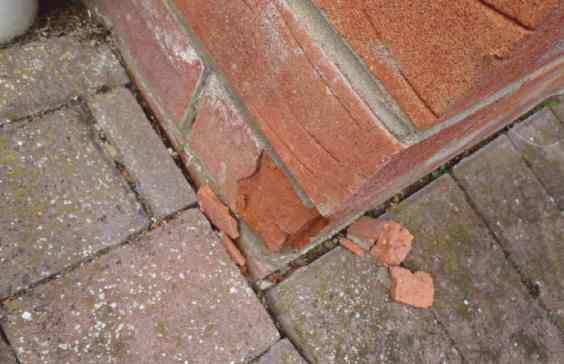
21 Nov, 2012/ by Surveyor Local /News
The brickwork of this Manchester home had suffered extensive spalling to the lower courses of brickwork. The most likely cause for this damage was frost, as it was clear from close inspection that the bricks at ground level were unsuitable for external use, and had not been covered with a protective layer of any kind.
Brickwork at ground level is particularly susceptible to 'spalling', or flaking in wet conditions. Where brick has not been covered with paint, render or any other suitable covering, moisture will seep into the brick surface. In colder weather this will freeze, expand, and cause the surface to crack and flake off.
This defect in of itself may only be a superficial problem, but once the surface of the brick has begun to spall, deterioration of the whole brick, and hence the wall itself, will accelerate. If left untreated, this can mean that parts of the wall will need to be knocked down and rebuilt entirely. This property near Trafford Park in Manchester, had clearly suffered extensive deterioration of the brickwork, partly also because the bricks chosen for use at ground level were not appropriately weather resistant.
Damp was also widespread along the base of the external wall at the rear of the building, as the ground level rose above the level of the damp proof course which ran around the external wall. This mean that groundwater could easily be absorbed by the wall, which had lead to rising damp, and clear signs of mould in the kitchen and living room.
